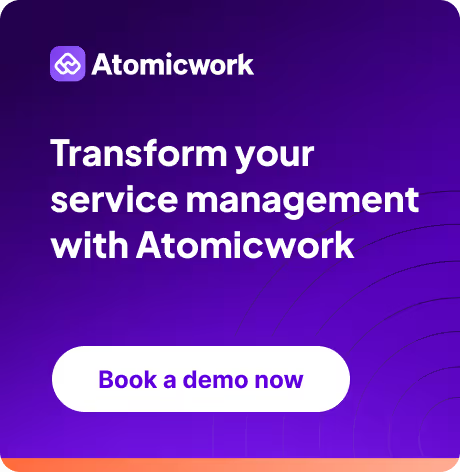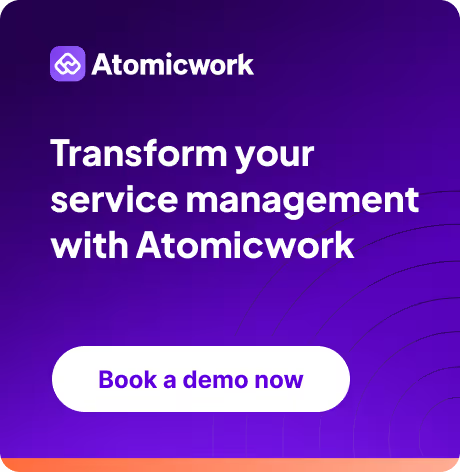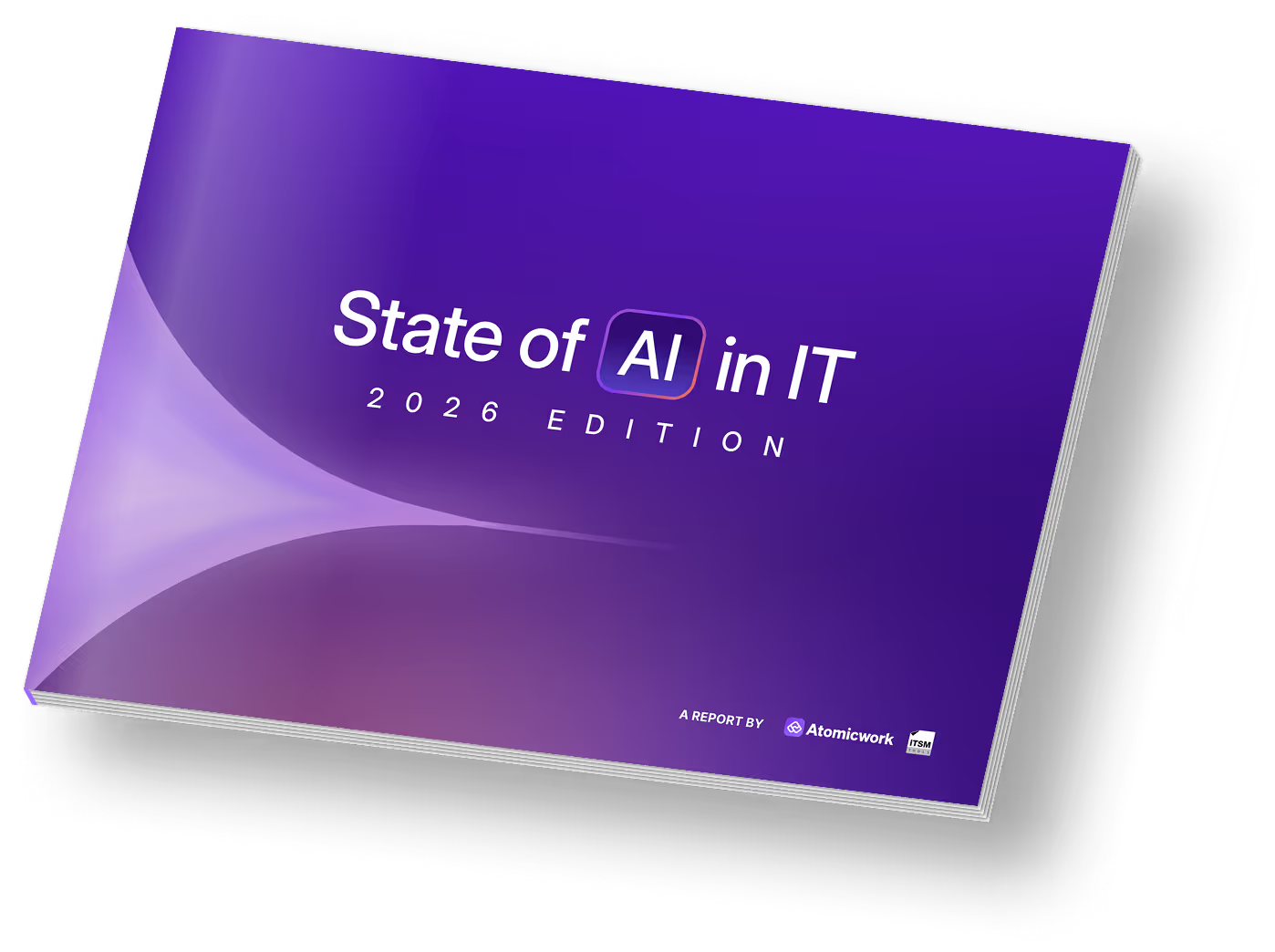What is IT Asset Management (ITAM)? A Complete Guide [2025]
We have some questions for seasoned IT leaders.
Does your organization need more visibility into software usage and hardware deployment?
Do you want to reduce frequent inaccurate cost forecasts and overspending?
Does your organization constantly struggle with license compliance issues?
Do you find the IT team spending more time troubleshooting hardware issues than strategic initiatives?
Is your answer a staggering “Yes” to all of these questions?
You are not alone. 84% of organizations face challenges managing their IT assets. The ITSM framework considers only the operational phase of an asset lifecycle to ensure smooth service delivery, not exclusively IT assets.
To support ITSM initiatives and gain visibility into your IT assets, you need IT Asset Management.
The asset management or ITAM framework manages an asset's entire lifecycle, from financial to contractual and operational functioning. It takes a holistic view of assets and ensures optimal utilization, compliance adherence, and implementation of security measures.
This guide will discuss IT Asset Management and how you can create and implement a successful ITAM framework, taking control of your IT assets.
What is IT asset management?
IT asset management is the process of tracking, managing, optimizing, and protecting IT assets throughout their lifecycle. This includes tangible assets like servers and computers and intangible assets like software, cloud subscriptions, and licenses.
It involves:
- Maintaining a comprehensive inventory of IT assets, including model number, licensed agreement, purchase date, and assigned users
- Ensuring the assets are deployed, configured, and maintained efficiently involving tasks like hardware upgrades and software license management
- Helping organizations to get the most out of their assets by identifying underutilized resources, extending the lifespan of existing equipment, and optimizing usage
- Securing the IT assets by managing access controls, implementing data security measures, and preventing unauthorized use
- With the introduction of generative AI, the future of ITAM looks bright as genAI speeds up the processing of a large volume of data within seconds, optimizes asset tracking, elevates asset life cycle management, and automates compliance through automated audits and reports
ITILv4 defines ITAM as the business practice of planning and managing computer equipment through its lifecycle. The goal is to take an agile approach to reduce costs, optimize overall value, and manage risks associated with assets.
Why is IT asset management important?
IT asset management is critical because of three significant reasons:
1. It helps reduce costs substantially
According to a study, about 50% of enterprises waste at least 10% of their software and SaaS applications expenses. About 53% of companies overspend 10% of their budget on unmanaged, unused, and unaccounted cloud resources.
Not only this, unused software licenses cost $45M per month, or roughly half a billion per year, to companies.
This results in significant financial losses. ITAM helps identify, track, and manage your resources, optimize the existing ones, and save costs substantially. This also helps track the lifecycle and ensure proactive maintenance, reducing downtimes and contributing to the extended lifecycle of the resource, further reducing wastage and costs.
Shutting down licenses in a random or uninformed manner can lead to higher costs in the medium term. Only when IT has access to all the information about who is using what, what is not used, what is still performing, and what needs to be repaired or replaced can it see and take advantage of greater efficiencies in a sustainable and recurring manner. - Yassine Zaied, Chief Strategy and Marketing Officer at Nexthink
2. Maximizes IT productivity
A 2023 Asana report found that 62% of the workday is lost to repetitive, mundane tasks, and about 56% spend their time on work about work.
Wasted time translates to decreased productivity and fewer innovations. ITAM provides a centralized view of assets, enabling quick access and efficient update deployment. It streamlines IT processes, improving operational inefficiency and productivity.
With AI and ML technologies, ITAM automates repetitive mundane tasks, provides instant resource access, and substantially reduces manual workload. This frees up time for strategic projects and allows the IT team to focus on work that drives business value.
3. Boosts security and mitigates data breaches
According to IBM’s Cost of Data Breach Report 2023, data breaches cost a global average of $4.45 million in 2023.
Uncontrolled access to IT assets is one of the significant security vulnerabilities. A robust ITAM improves the cybersecurity and physical security of your business’s IT assets. ITAM-enabled robust tracking helps detect theft and unauthorized access quickly.
About 77% of professionals agree that a strong ITAM is necessary for software, hardware, and firmware cybersecurity.
ITAM vs ITSM - What are the differences?
ITAM and ITSM both play essential roles in optimizing IT operations. However, they focus on different aspects of the IT environment. They are not interchangeable but are complementary frameworks.
Let’s look at their respective roles and understand the differences.
ITSM: The prime focus of ITSM is to deliver and manage IT services to end-users, primarily employees. It emphasizes activities like resolving incidents, streamlining service desk operations, managing changes to the IT environment, minimizing downtime, and ensuring reliable services.
- It implements incident resolution workflows and establishes problem-management processes
- It creates a service catalog outlining available IT services and manages SLAs, defining service quality metrics
ITAM: The prime focus of ITAM is on the physical and virtual assets that fuel the IT infrastructure. It includes software, hardware, and cloud resources, tracking, management, and optimization for higher ROI. To achieve this, ITAM works on maximizing asset utilization, minimizing costs, ensuring license compliance, and implementing security measures.
- It focuses on employee-centric processes like asset discovery and classification for comprehensive inventory
- Schedules hardware maintenance, oversees license management and optimizes software deployment to reduce wastage
ITAM and ITSM partnership
The two frameworks work together to create a robust IT infrastructure. ITAM provides asset data to support ITSM services, which use this data to make data-driven decisions about resource allocation, cost optimization, and service provisioning.
Types of asset management
Different ITAM types focus on various aspects of IT infrastructure. They are integrated within a comprehensive ITAM strategy and may even overlap sometimes.
Here are the key ones:
Hardware Asset Management:
This includes managing the tangible components of the IT environment like,
- Desktops, laptops, and servers
- Network equipment (routers, switches, firewalls)
- Printers and scanners
- Mobile devices (phones, tablets)
Software Asset Management:
This includes managing software licenses and compliances like,
- Software installation and tracking usage
- Identifying and managing unused licenses
- Optimizing license agreements and vendor negotiations
- Ensuring up-to-date software
Mobile Device Management:
This includes managing and securing mobile devices by,
- Enforcing security policies
- Distributing and managing apps
- Remotely accessing devices like wiping stolen or lost device
- Tracking device location
Cloud Asset Management involves efficiently managing cloud resources. It involves tracking, monitoring, optimizing cloud services, and ensuring security compliance.
Digital Asset Management:
This includes digital resources used by the organization like,
- Images and videos
- Documents and presentations
- Customer details
- Financial data
- Marketing materials
ISO standards and compliance in ITAM
While implementing ITAM might seem straightforward, following internationally recognized standards ensures your organization adheres to best practices and maintains consistency. The International Standards Organization (ISO) has developed a comprehensive framework for IT asset management - the ISO 19770 family of standards.
Let's dive into how these standards can strengthen your ITAM implementation:
- Process framework (ISO/IEC 19770-1): This foundational standard outlines the core processes and best practices for ITAM implementation. It helps organizations demonstrate compliance with governance requirements, establish standardized ITAM processes, and align practices with business goals.
- Software identification (ISO/IEC 19770-2): This standard introduces standardized software identification tags and automated software discovery methods, enabling consistent tracking and managing software assets across the organization.
- Software entitlement (ISO/IEC 19770-3): With the rise of subscription-based software and complex licensing models, this standard helps organizations track software entitlements accurately and measure actual software consumption. This is particularly crucial for optimizing license costs and ensuring compliance.
- Resource utilization (ISO/IEC 19770-4): This standard focuses on standardized resource usage reporting and consumption monitoring frameworks, which are particularly relevant in cloud-first environments. It helps organizations track and optimize their cloud resource usage effectively.
- Vocabulary and overview (ISO/IEC 19770-5): This standard ensures consistent communication across your ITAM implementation by standardizing terminology and providing clear definitions, enabling better collaboration between teams and vendors.
How to manage IT assets effectively?
Managing the different types of IT assets can feel like juggling a chainsaw. You must manage all of them efficiently to avoid inefficiency.
These five tips will help you with IT asset management.

1. Build inventory and set standardization
Identify IT assets and document them systematically. Standardize across the organization to simplify asset procurement, deployment, and maintenance. This standardization can reduce overall IT costs by up to 33%.
2. Integrate ITAM with other ITIL processes
Integrating ITAM with other ITIL processes helps the IT team gain insights that guide informed decision-making. Defining asset relationships enable faster incident resolution and change management. Here’s how it empowers ITIL:
- ITAM provides crucial details about assets and allows remote access to servers and desktops for efficient troubleshooting and quick incident management
- ITAM provides data to pinpoint the root cause of problems, accelerate resolution time, prevent future incidents, and ensure effective problem management
- ITAM ensures the changes are planned and create minimal disruptions. It also helps predict the impact of planned changes in the IT environment to minimize risks

3. Automate notifications
ITAM involves many stakeholders, such as asset managers and end users, who depend on these assets. Automating notifications keeps everyone informed about critical asset changes and allows the stakeholders to take preventive actions proactively.
For example, notifications about expiring licenses can help avoid compliance issues in advance. Similarly, automated alerts can notify users about upcoming maintenance schedules.
4. Actionable asset reporting
Generate detailed asset reports to help decision-makers with a clear, up-to-date picture of IT infrastructure. This helps conduct periodic audits to ensure inventory accuracy, identify discrepancies, and precise financial planning. Some of the points to include in these reports are:
- Unauthorized usages
- Detection of unauthorized CIs
- License rates and average license costs
- Assets linked to service failure and others
Besides these, reports on metrics and achieved benchmarks on assets like utilization rates and MTTR should also be prioritized to identify improvement areas and make informed decisions.
5. Embrace automation with IT asset management software
Manually tracking and managing IT assets is error-prone and time-consuming. With AI, an IT asset management software can streamline the entire process into a centralized platform and automate,
- Asset discovery and inventory: Identify and maintain a comprehensive asset inventory, including hardware, software, and licenses.
- Asset classification and mapping: Automatically classify assets with serial numbers, asset tags, and more.

- Incidents related to assets: You can track incidents related to the asset and generate reports to help in asset planning and make better purchase decisions.
- Remote troubleshooting: Help agents remotely troubleshoot issues like resetting passwords, restarting or wiping the system, unlocking assets, etc, from the request ticket itself.
- Software License Management: Track and manage software licenses, including usage, compliance, license entitlements, and optimization opportunities.
- Reporting and Analytics: Robust reporting and analytics capabilities to provide insights into IT assets usage, compliance, costs, and optimization.
Challenges of Implementing ITAM in an Organization
About 90% believe the rapidly changing business, regulatory, and technology environment makes enhancing ITAM maturity more challenging.
So, what challenges do successful ITAM implementations pose, and how do we navigate them?
1. Lack of visibility of IT assets
Traditional approaches make tracking all the assets across the organization problematic. Decentralized purchasing, unapproved use of software or cloud apps, and manual tracking systems fail to provide a birds-eye view of the organization’s assets. This impacts decisions regarding asset lifecycle management, cost optimization, and regulatory compliance.
Solution: Implement an automated asset discovery tool that centralizes asset procurement and enforces clear usage guidelines. You can also make it easy for your IT team to find the status of assets with an AI assistant.

2. Security and compliance risks
Lack of visibility leads to unmanaged, unused apps creating security vulnerabilities due to a lack of patching and monitoring. This further increases the risk of unauthorized access and non-compliance.
This impacts data security due to security breaches and can lead to fines for non-compliance.
Solution: Ensure to track patch updates and asset compliance status as part of your ongoing asset monitoring procedures.
3. Mundane IT processes
Business processes involve time-consuming manual operations like onboarding and offboarding employees and access management to grant access rights to IT resources. These repetitive processes delay onboarding new employees, pose security risks during offboarding, and burden employees.
Solution: Implementing an ITAM software with automation capabilities like automated workflows, AI assistant, Slack-based IT support, auto-resolution of frequent issues, and robust ITSM features for a comprehensive centralized asset, incident, and service management.

4. Lack of metrics
Tracking asset usage is crucial for IT asset management. The lack of metrics and tracking makes it challenging to identify underutilized assets, leading to wasted resources and the risk of non-compliance.
Solution: Integrating an ITAM tool with robust monitoring and tracking features helps regularly analyze usage data and identify underutilized assets. It also helps optimize license agreements and plan IT budgets efficiently.
5. Integration challenges (With tools and between departments)
ITAM success depends on seamless integration with existing ITSM workflows and tools and fostering effective collaboration between IT teams, managers, and department heads. Failing to achieve this leads to siloed approaches, wasted efforts, and difficulty obtaining a comprehensive view of assets.
Solution: A robust ITAM software with open APIs, extensive integration capabilities, and configuration support services. Besides this, establishing clear communication by creating a unified space for tickets, notifications, and alerts for all stakeholders ensures everyone is on the same page. As a result, you get streamlined workflows, data accuracy, improved productivity, and better collaboration.
Conclusion
ITAM is a business necessity that helps overcome challenges like lack of IT asset visibility and brings sophistication into overall ITSM. With the right tool, you can save costs by eliminating wasted resources, streamlining workflows to enhance productivity, and ensuring adherence to regulations.
Atomicwork offers a one-stop solution to master your ITAM. It brings a conversational AI assistant to automate issue resolutions and workflows and enhance employee experience. It provides robust ITSM features and seamless integrations with several IT and HR apps to unify your service delivery under one roof.
Want to unlock the full potential of your IT assets?
Book a demo with Atomicwork.
Frequently asked questions
IT Asset Management (ITAM) is a structured process that organizations adopt to manage the purchase, deployment, maintenance, utilization, and disposal of all their IT assets. These assets could include be hardware assets (like laptops, mouse, keyboard etc,.), software (like software licences or SaaS application subscriptions) or network infrastructure (like routers and switches).
The primary goal of IT asset management is to ensure that an organization's IT resources are accounted for, deployed, maintained, upgraded, and disposed of when necessary. Adopting ITAM processes help enterprises to reduce costs, ensure security compliance, and optimize for an asset's lifespan.
Managing an IT asset inventory begins with clearly defined objectives which could be cost control, compliance, or optimization.
Organizations need to:
- Choose a centralized asset management platform with critical integrations
- Identify and categorize assets by type, department or location
- Collect and document useful information or attributes of the IT assets such as model name, serial number, purchase date, or warranty details
- Check for security compliance and adherence to industry regulations
- Define processes to track the movement of assets between end users and IT teams
- Continually monitor the asset performance
- Define processes to dispose or decommission IT assets
An IT Asset Management (ITAM) policy is a comprehensive document that enterprises have to outline the principles, guidelines, and procedures for managing their IT assets. This policy could cover:
- The scope of the types of assets included in the monitoring
- Key processes for asset monitoring, reporting or decommissioning
- Respective stakeholders along with their roles and responsibilities in asset maintenance
- Standard procedures for financial reconciliation of assets and audits
Yes, Atomicwork offers AI-powered asset management capabilities that help you automate key asset management workflows. Sign up to see how Atomicwork can help you manage IT assets efficiently.
More resources on modern ITSM






































